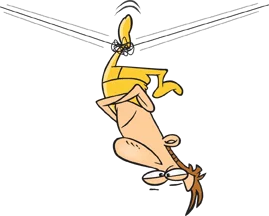Stockholder's Equity Statement
Financial Statements

Statement Of Stockholder's Equity
& Retained Earnings
Similar to the capital statement discussed earlier the Statement of Stockholder's Equity and the Statement of Retained Earrnings also serve as the bridge between the income statement and balance sheet and provide the additional reasons for the changes in Owner's Equity. These statement are only prepared for businesses that are corporations.
The Statement of Retained Earnings is a financial statement prepared by corporations that summarizes the changes in the amount of Retained Earnings during a particular period of time. Retained earnings is the portion of net income that a company does not distribute to its shareholders but retains in the business for various purposes such as future business growth and meeting debt obligations . It increases when a company earns net income and decreases when a company has a net loss or declares dividends during the period. Retained earnings appears in the balance sheet as a component of stockholders equity.
It's a cumulative amount. It represents the profit/ loss that has not been paid out as dividends since the beginning of the business.
The statement of retained earnings is prepared after the the income statement but before the balance sheet because the balance sheet needs the income/loss in order to compute the amount of the retained earnings balance at the end of the period which is finally reported in the company's balance sheet.
The formula used to compute the retained earnings figure at the end of the period is:
Retained earnings at the end = Retained earnings at the beginning + Net income – Dividends
Format of the Statement of Retained Earnings
A simple format of statement of retained earnings is given below:
XYZ Corporation Statement Of Retained Earnings For Period Ending December 31, xxxx | |
| Beginning Retained Earnings | xxxxxx |
| Plus:Net Income or | xxxxxx |
| Less:Net Loss | xxxxxx |
| Less:Dividends | xxxxxx |
| Ending Retained Earnings | xxxxxx |
In the above format, the heading part of the statement is somewhat similar to that of an income statement. It consists of three lines. The first line exhibits the company name to which the statement belongs, the second line shows the statement name, which is obviously the statement of retained earnings, and the third one tells users about the time span for which the statement is being prepared. This time span may consist of a quarter, a six month period or a complete accounting year of the entity.
Notice that the content of the statement starts with the beginning balance of retained earnings. The net income is added to or the net loss is subtracted from the beginning balance, any dividends declared during the period (whether paid or not) is also subtracted in the statement of retained earnings. The resulting figure is the balance of retained earnings at the end of the period that should appear in the stockholders’ equity section of the entity’s balance sheet.
Additionally, the Statement of Retained Earnings is used in preparing the Statement of Owner's Equity which includes additional changes in equity such as additional stock issued.
The Statement of Stockholders Equity summarizes the changes in the components of the stockholders’ equity section in the Balance Sheet. It discloses information about transactions affecting stockholders’ equity that occurred during a period.
Common changes that may occur:
Common Stock Issued
This is the amount invested by the owners in the company. The ownership of the company’s shares is confirmed by issuing common stock. Common stocks may have par value or stated value or may be issued as shares with no fixed par value (subject to local issuance regulations).
Additional Paid In Capital
Amount paid in excess of the par or stated value of the stock issued
Preferred Shares Issued
Preferred shares grant rights that take precedence over the rights of holders of common stock. Typically, these priority rights are associated with the receipt of dividends and the receipt of assets upon liquidation of the company.
Retained Earnings is the accumulated amount of recognized profits not paid to the owners of the company as dividends. Changes to Retained Earnings result mainly from profits and losses and dividends. These changes are presented in the Retained Earnings Statement and also included in the Statement Of Stockhlder's Equity.
Note: Many companies prepare a combined Statement of Stockholder's Equity & Retained Earnings.
An example of a Combined Statement Of Stockholder's Equity & Retained Earnings follows:
XYZ Corporation Statement Of Stockholder's Equity For The Period Ending Dec 31, xxxx | ||||
| Common Stock | Paid In Excess | Retained Earnings | Total Equity | |
| Balance Jan 1,xxxx | xxxxxxx | xxxxxx | xxxxxxx | xxxxxxx |
| Plus:Issued Shares of Stock | xxxxx | xxxxx | xxxxx | |
| Net Income/(Loss) | xxxxxx | xxxxxx | ||
| Less:Dividends | xxxxx | xxxxx | ||
| Balance Dec 31,xxxx | xxxxxxx | xxxxxx | xxxxxxx | xxxxxxx |
In the above format, the heading part of the statement is also somewhat similar to that of an income statement. It consists of three lines. The first line exhibits the company name to which the statement belongs, the second line shows the statement name, which is obviously the statement of stockhlder's equity, and the third one tells users about the time span for which the statement is being prepared. This time span may consist of a quarter, a six month period or a complete accounting year of the entity.

On to The Balance Sheet Lesson
I hope it balances better than our cartoon buddy !
